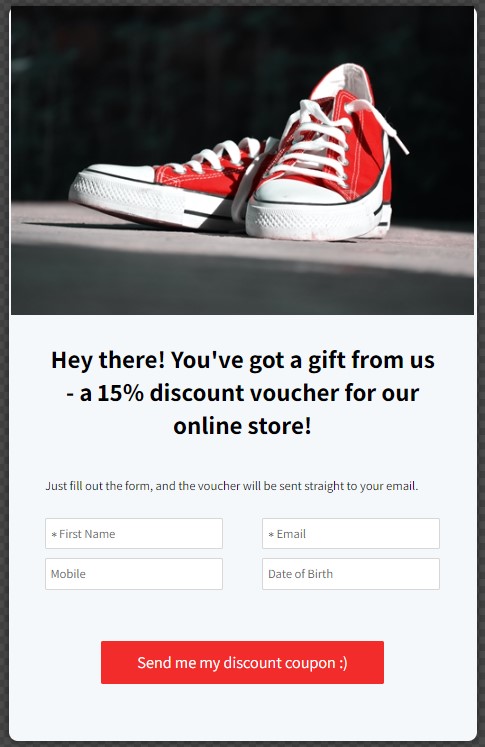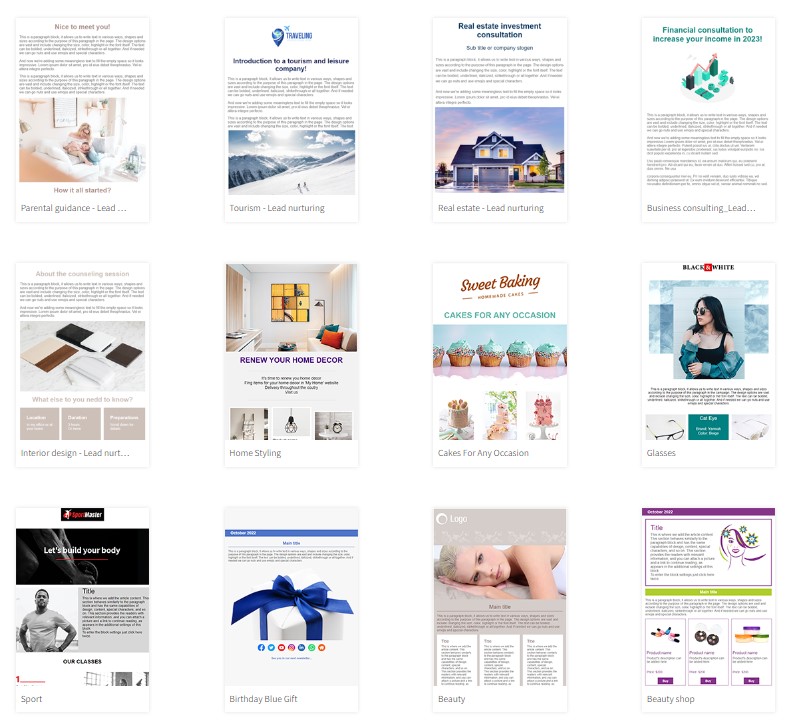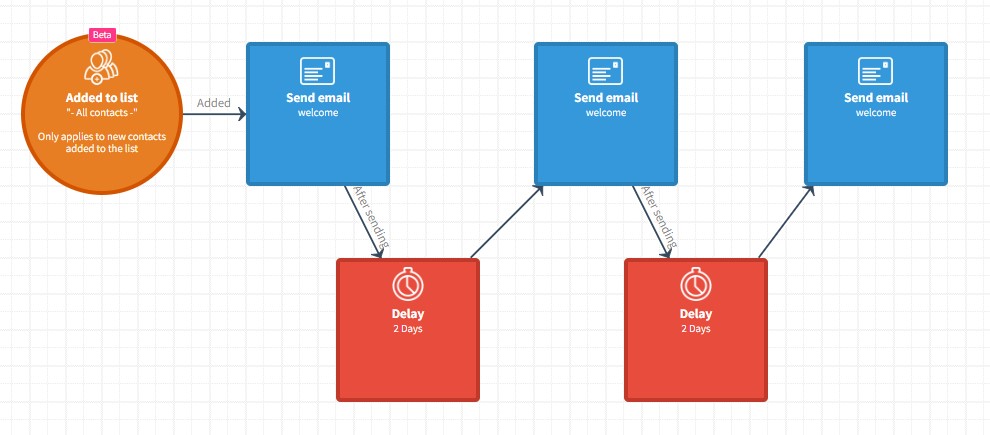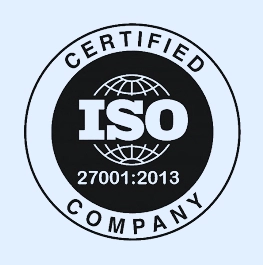As business owners, you’re familiar with these types of customers. They might come through a campaign, hear a recommendation, receive your product or service as a gift, or redeem a coupon. Now that they know your product is good, they have the potential to become regular customers. So, how can automation help you (along with a few other tricks)?
Abandoned Customers are the customers who made one purchase but never returned. There are also the more complex cases—those who filled their shopping cart and then left the site. Both types of customers already know the product and have been convinced by a campaign, recommendation, or active search, yet they didn’t complete the purchase. Why does this happen? Research, mainly through surveys like this one by the American company Baymard, shows that the most common reason for cart abandonment (cited by 60% of respondents) is high additional costs such as taxes or shipping fees that significantly increase the final price. Other reasons include sites that only allow purchases through an active account, website glitches, lack of preferred payment methods, and more. Only 4% mentioned “credit card declined,” indicating that most visitors are capable of making a purchase if the conditions are favorable.
The Cart Abandoners Group
Before being business owners, you’re also consumers in a hyper-consumer world. You browse dozens of e-commerce sites daily, searching for your next purchase. You know that customers leaving a site despite having a full cart is not uncommon. But for your business, it’s less than ideal. Research has long tried to understand the reasons behind cart abandonment. We’re here for the solutions.
- It All Starts with a Pop-Up
It’s possible the abandonment wasn’t personal. Our world is full of distractions, and one might have caught the customer right before they filled in their credit card details. Therefore, we want to ensure every new visitor leaves their email address or mobile number and joins our mailing list. A sign-up pop-up should include a compelling offer, like a discount or free shipping on the first order (and no, a coupon code for the next purchase doesn’t count). This encourages purchase completion and allows us to follow up with the customer, even if they abandon their cart.

2. Now, Reminders
We have one customer, one email, a full cart, and zero purchases. The best approach is a gentle reminder. Send an initial email with a personal link to their abandoned cart, in a friendly tone, without guilt or pressure, highlighting the benefits of the product. Including a content piece, research, or professional information related to the product’s values and benefits can also help.
3. Tough Nuts to Crack
Some customers won’t respond to emails or empty their cart. The next email in our automation series can be dedicated to them. Include a direct link to the abandoned cart and an additional incentive (e.g., free shipping) to persuade even the stubborn ones. Don’t give up on them too quickly; you can also reach out via SMS or WhatsApp. Any message or content prepared for email can easily become a personalized smartphone campaign.
4. Last Tip from Us
Customers often abandon their cart due to frustration with the purchase process. Try to understand why. Is the registration process too long, with no option for guest checkout? Are the shipping costs too high, making the total price unreasonable? Is the website not mobile-friendly, making the browsing experience unpleasant? These questions can help identify the breaking point for customers on their way to a successful purchase.
The One-Time Customers Group
The one-time customers are those who visit the site, fill a cart, complete a purchase, and then disappear. Or do they?
There are various reasons for not returning after a purchase. While we’re here to provide solutions, you need to answer a few questions first:
- Do you have a consumable product? If so, how often is it needed?
- Do you have additional products to offer?
- What’s your primary sales model (product purchases, monthly subscriptions)?
- Are your customers satisfied?
The Right Email at the Right Time
You know best how long your products last and when customers might need a refill. With this knowledge, you can time an automatic email reminder just when the customer is likely running out. Besides email, a reinforcement SMS or even a WhatsApp message can keep you in their mind. For instance, one of our clients who owns a pet store sends WhatsApp reminders to customers based on their last purchase, prompting them to buy more pet food or replace a flea collar, keeping them in the customers’ minds.
We Have an Offer
It’s likely that a customer who bought from you once would be interested in more products. In our automation for occasional customers, we include an email suggesting additional products. The more accurate the suggestion, the more likely additional purchases will follow. For a customer who bought gluten-free products, offer more gluten-free items; for one who bought a towel set, suggest bed linens. You get the idea.
Hey, Become a Subscriber
If your business offers consumable products or services that fit a recurring model, offer monthly, annual, or whatever-frequency subscriptions. This secures regular income and a base of regular customers, reducing time-consuming tasks and letting you focus on what truly matters.
How Was It?
Hearing from first-time customers about their experience is always exciting. It confirms we’re on the right track and encourages continued excellent service and products. This quality control can be done in several ways, such as sending a survey, an automatic email/SMS/WhatsApp to customers after a reasonable time post-purchase. Opening a direct communication channel helps build and maintain a relationship, ensuring customer satisfaction.
How Do You Actually Do All This?
Here’s an example of a basic automation process that will help you welcome customers who have purchased from you once, allowing them to get to know you better and connect through value propositions and additional tips:
Define a Trigger – Joining a List
All customers will be added here after their first purchase.
Add an Action – Send Email
Send a brief introductory email with details about yourself and your business, and thank them for their purchase.
Add an Action – Delay
Set a waiting period before sending the next email in the series.
Add an Action – Send Email
After the defined waiting period, send an email to remind them that you’re here. Include an interesting tip or a customer story they can relate to or be inspired by.
Add an Action – Delay
Set another waiting period before sending the next email in the series.
Add an Action – Send Email
Send the next email in the series. This one should continue to build the relationship by providing value with an interesting article or important tip. You can also include a purchase offer or special deal for new customers.
*You can, of course, continue the series with additional emails, depending on your goal and the customer journey you’ve defined.*
The main idea of this process is to reinforce customers’ choice in you and provide real, personalized value based on the information you have. This way, they’ll know that you understand them and their needs, thereby strengthening their loyalty to your brand and to you.
By deepening your relationship with customers, you can incorporate relevant offers and incentives within the email series to maximize revenue from your existing and loyal customers.
And What About the Emails?
You can easily create these emails using our designed templates. Our system offers dozens of templates categorized by professional fields and special occasions.

In Summary
By refining your approach to abandoned customers and correctly categorizing them to provide relevant responses that prompt action, you increase the chances of converting abandoners into buyers.
A short and simple customer journey that will simply bring in more money. Don’t miss out on it.


